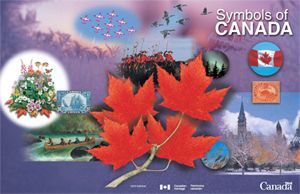U4L2 Canadian Identity
U4L2
Lesson
![]() RESOURCES
RESOURCES
Read and refer to Chapter 14 as your resource for completing this lesson's assignment.
![]() LESSON
LESSON
Canadian national sentiment developed slowly after Confederation reflecting the strengths of provincialism and, in English-speaking Canada, the overriding sense of membership in the British Empire. There were glimmers of nationalism in the CANADA FIRST movement of the 1870s, and among writers of the 1890s.
Canada's participation and sacrifice in the First World War and its success on battlefields such as Vimy Ridge did much to create a sense of distinct nationhood. The aftermath of the war also brought a surge of cultural nationalism, centered in Toronto and reflected in products such as the paintings of the Group of Seven.
Political nationalism, under the guidance of the Liberal government of Prime Minister Mackenzie King was directed against the fading symbols of colonial ties with Great Britain. This anti-colonial nationalism met no resistance from Great Britain, but it conflicted with the attachment many English-speaking Canadians felt for British symbols. Governments and citizens often use symbols to portray what they think is important about their country's history, nationhood and the role in the world.
What Makes Us Canadian?
Watch the following video to learn what Canadians had to say about their identity to reporter, Cameron MacIntosh.
https://www.cbc.ca/player/play/2676463245
Watch the following video to learn about the various factors that impact identity.
Canadian Identity
 |